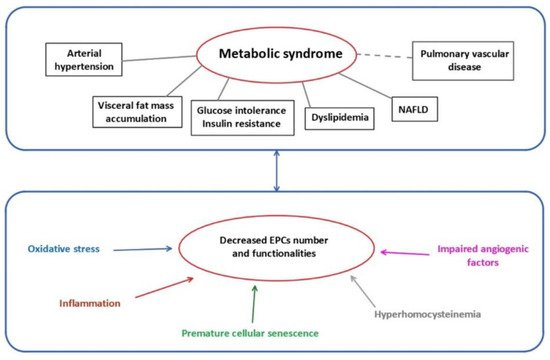Hyperhomocysteinemia is a clinical condition characterized by a high level of homocysteine in blood (above 15 µmol/L)
[182][183][184]. Homocysteine is a sulfur-containing amino acid synthesized during the metabolism of methionine. It is catabolized either by remethylation to methionine, catalyzed by methionine synthase or betaine homocysteine methyl transferase, or by transsulfuration, catalyzed by cystathionine β-synthase (CBS) and cystathionine γ-lyase (CSE), leading to cysteine, a precursor of glutathione
[185][186][187]. CBS and CSE require vitamin B6 as co-factor. A rate-limiting CBS enzyme as well as an insufficient dietary supply of cofactors have been involved in severe cases of hyperhomocysteinemia
[188][189][190]. Other causes have also been identified, such as smoking, renal failure and other systemic diseases
[191].
Hyperhomocysteinemia is an independent risk factor for cardiovascular disorders
[192]. It has been associated with endothelial dysfunction in several animal models
[193][194][195]. Hyperhomocysteinemia has been shown to contribute to endothelial dysfunction by induction of oxidative stress. In fact, hyperhomocysteinemia increases inducible nitric oxide synthase (iNOS) synthesis and ROS production
[196], associated with SOD inactivation
[197][198], so generating important quantities of peroxynitrite
[196][199] and, therefore, contributing to nitrative stress which induces severe damage to proteins, lipids and DNA
[200][201][202]. EPCs are particularly sensitive to oxidative stress, so hyperhomocysteinemia can contribute to EPCs dysfunction. It has been shown that homocysteine dose- and time-dependently impaired EPCs proliferative, migratory, adhesive and in vitro vasculogenesis capacities
[203]. A significant decrease in circulating EPCs number and impaired functional capacity were observed in patients with hyperhomocysteinemia
[204]. In mice, hyperhomocysteinemia-induced nitrative stress contributed directly to the injury of EPCs, by decreasing their survival rate, inducing apoptosis and necrosis
[205]. In patients with stroke, high plasma level of homocysteine has been associated with a reduced number of EPCs colonies related to apoptosis
[206][207], and administration of B vitamins (B6, B9) was able to attenuate such effects
[206]. DNA methylation is an important process for gene transcription and therefore for regulation of protein expression. EPCs isolated from bone marrow in a mice model fed with a high methionine-rich diet displayed a reduced adhesion capacity and tube formation abilities associated with hyper-methylation in the CpG islands of the CBS promoter, leading to downregulated CBS expression. Such dysfunctions were reversed by administration of a DNA methylation inhibitor to mice fed with a high methionine-rich diet
[208].
Homocysteine and hydrogen sulfide (H
2S) are interconnected. H
2S is an endogenous gasotransmitter, produced by CSE, CBS and 3-mercaptopyruvate sulfur transferase
[187][209][210]. H
2S acts via the S-sulfhydration of cysteine residues (-SH) of target proteins to form persulfide group (-SSH), which can modify the structure and activity of various target proteins
[210][211]. H
2S is emerging as an essential contributor to homeostasis of endothelial function, besides NO. It is involved in the regulation of several systems such as cardiovascular, nervous, gastrointestinal and renal systems, but also in the inflammatory and immune responses
[212]. In the cardiovascular system, H
2S is produced in cardiomyocytes, vascular endothelial cells, smooth muscle cells and EPCs
[213]. H
2S exerts antioxidant, anti-apoptotic, anti-inflammatory and vasoactive activities, and regulates proliferation, migration and angiogenesis, in an autocrine and paracrine manner
[209][210][214][215][216]. H
2S induces vasorelaxation by opening of K
ATP channels in vascular smooth muscle cells and partially through a K
+ conductance in endothelial cells
[217]. H
2S can decrease inflammation by inhibiting transcription factors such as NF-kB
[218]. H
2S can reduce oxidative stress, through direct scavenging of oxygen and nitrogen species and enhancing antioxidant defense mechanisms, notably via the Keap1/Nrf2 pathway, and delays senescence
[219]. In addition, H
2S can also interact with the NO/NOS pathway to control vascular function, thanks the inhibition of phosphodiesterases in smooth muscle cells, by PI3K/AKT-dependent phosphorylation of eNOS in Ser1177 and by stabilization of eNOS in the dimeric state
[220][221][222]. Moreover, H
2S is a major factor to ensure EPCs functionality. In diabetic leptin receptor deficient db/db mice, the H
2S plasma levels were significantly reduced and associated with impaired EPCs functionality such as tube formation, adhesive function and wound healing by decreasing angiogenesis process
[223]. Shear stress was found to improve several EPCs functions, such as proliferation, migration, tube formation and reendothelialization
[224][225][226], probably through enhancement of H
2S production
[227]. Indeed, shear stress was able to increase H
2S production and CSE protein expression in human EPCs in a dose- and time-dependent manner, and to improve EPCs proliferation, migration and adhesion capacity
[228].

